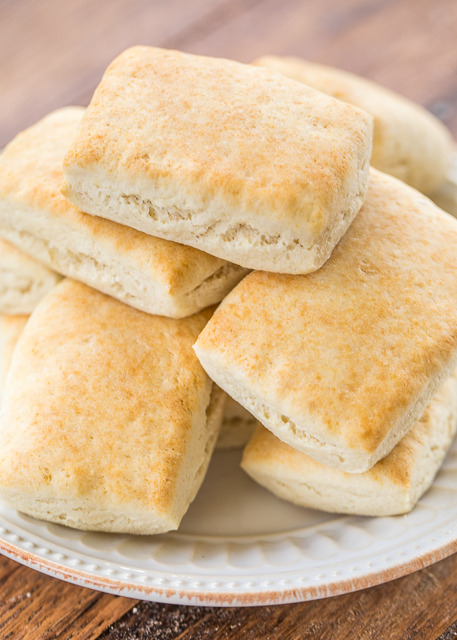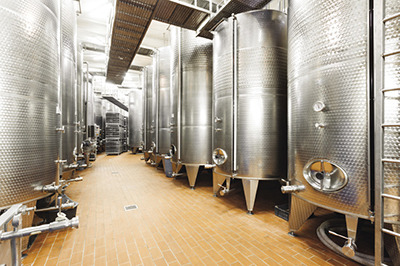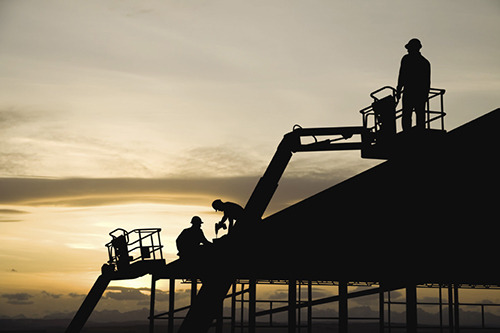It’s A Good Sunday. 🤗
It’s a good Sunday. 🤗
To get the Sunday week summary delivered to your inbox subscribe here.
Experimental Saturday
Meet the ‘400k pie’

Banana whey protein bread

Interesting and fun stuff
Work vs Hobbies [Comic]
Use a Pencil to Freeze Sauce into Usable Portions
Bake the Perfect Pound Cake
Best Chocolate Chip Cookie Bake Off
Recipe lists
10 PUMPKIN SPICE FAVORITES
Ten Minute Meal Prep Recipes and Prep Ideas
10 DESSERTS AND COOKIES TO TRY FOR FALL
20 PUMPKIN RECIPES FOR FALL
25 APPLE RECIPES TO GET YOU READY FOR FALL
19 OF THE BEST EASY & HEALTHY ONE PAN MEALS
Our Favorite Pumpkin Recipes
Food days
Cheeseburger 🍔
Butterscotch Pudding
Rum Punch 🍹
Pecan Cookies
White Chocolate
Top recipes!
Classic Snickerdoodles

Fresh & Flavorful Strawberry Cake Recipe

Double Chocolate Brownies

RED VELVET SUGAR COOKIES RECIPE

BROWN SUGAR POUND CAKE

Ginger Fig Tart with Chestnut-Almond Crust {vegan & gluten-free}

RED VELVET MACARONS WITH CREAM CHEESE FROSTING

My Mom’s Homemade Spaghetti and Meat Sauce

APPLE FRITTER PANCAKES

Bacon Tomato and Spinach Spaghetti

PUMPKIN PIE SPICE PROTEIN SMOOTHIES

Apple Spice Ricotta Donuts

pumpkin gnocchi with sage butter sauce

Mashed Potato Fries

QUICK POTATO ROLLS

Follow for recipes
Get your FoodFfs stuff here
More Posts from T-sci-eng and Others
Dude, bullets are literally made to shatter on impact. It's to prevent over-penetration. Bullets frequently shatter if they hit human bone inside a body, for example. So congrats, a katana is as good at stopping bullets as a human bone. Or a regular butter knife. Or even a regular piece of old steel. Like the ones used in a target range. Ever wonder why the steel plates at target ranges don't have holes in them even tho rifle caliber bullets hit them? It's cause the bullet shatters on impact.
To be very clear, the intention of the post was never to say that Katana is the ultimate sword. It was merely to enlighten the possibility of the bullet getting shattered by a sword/Knife.
Yes, bullets do shatter on impact.

But I am not so sure about what you say about the human bone though.
I believe it really depends on that kinetic energy of the bullet, the bullet size and the place of impact of the bullet on the body.

And even with the tissues surrounding the bone, there have been many instances where the Femur ( thigh bone ) fractured on impact.
If anyone reading this has a background in the field, would highly appreciate to hear your stance on this.
Thanks for asking anon ! :D

This is the Hollow Mask Illusion.
At first, it looks like the face is popping out towards you, but as it turns far enough, you realise that it is in fact concave, bending inwards from the base, away from you. This illusion plays on the fact that our perception is influenced by past experience; we expect faces to protrude outwards, which helps the illusion trick our brains.
You can make your own version of this mask at home, and it’s an awesome activity to try with your kids to get them thinking about the science of psychology. Click here for all the info!
5 things you didn’t know about... Concorde

Credit: British Airways
1. Operated by British Airways and Air France, Concorde went into operation in 1976, following 5,000 hours of flight testing. Seating 100 passengers, it catered to the privileged or business traveller. Concorde was withdrawn from service in 2003, after 27 years.
2. The most popular route for the British carrier was from London Heathrow to New York JFK in just three hours and 20 minutes. Cruising at Mach 2.02, passengers experienced heights of 60,000ft, a vantage point from which they could see the curvature of the Earth below and dark skies above at midday.
3. The four Olympus 593 engines that powered Concorde were twin spool turbojets.
4. The materials used for Concorde’s structure needed to withstand temperature extremes – subsonic speeds, the aircraft fuselage would experience lows of -35°C, but at Mach 2 the temperature reached 127°C at the nose.
5. Concorde’s long, pointed nose cone played a key role in landing. Formed of resin-bonded glass fibre, as metals would interfere with the signals detecting storm clouds, the hydraulically powered nose cone could be moved independently to an angle of 12.5° on landing, allowing the pilot to see the approaching runway.
To find out more see page 60 of the June issue of Materials World or visit http://bit.ly/2qDPjJC.






Looping thunderstorm gifs by Mike Hollingshead




Alloys: Wood’s Metal
Also known as Lipowtiz’s alloy as well as the commercial names of Cerrobend, Bendalloy, Pewtalloy, and MCP 158 among others, Wood’s metal is a bismuth alloy consisting of 50% bismuth, 26.67% lead, 13.33% tin, and 10% cadmium by weight. Named for the man who invented it, a Barnabas Wood, Wood’s metal was discovered/created by him in 1860.
Wood’s metal is both a eutectic and a fusible alloy, with a low melting temperature of approximately 70 °C (158 °F). While none of its individual components have a melting temperature of less than 200 °C, a eutectic alloy can be considered as a pure (homogeneous) substance and always has a sharp melting point. If the elements in a eutectic compound or alloy are not as tightly bound as they would be in the pure elements, this leads to a lower melting point. (Eutectic substances can have higher melting points, if its components bind tightly to themselves.)
Useful as a low-temperature solder or casting metal, Wood’s metal is also used as valves in fire sprinkler systems. Thanks to its low melting temperature, Wood’s metal melts in the case of a fire and thanks to the bismuth it is made from, the alloy also shrinks when it melts (bismuth, like water ice, is one of the few substances to do so) which is the key to setting off the sprinkler system. Wood’s metal is also often used as a filler when bending thin walled metal tubes: the filler prevents the tube from collapsing, then can be easily removed by heating and melting the Wood’s metal. Other applications include treating antiques, as a heat transfer medium in hot baths, and in making custom shaped apertures and blocks for medical radiation treatment.
With the addition of both lead and cadmium, however, Wood’s metal is considered to be a toxic alloy. Contact with bare skin is thought to be harmful, especially once the alloy has melted, and vapors from cadmium containing alloys are also quite dangerous and can result in cadmium poisoning. A non-toxic alternative to Wood’s metal is Field’s metal, composed of bismuth, tin, and indium.
Sources: ( 1 - image 4 ) ( 2 - image 2 ) ( 3 ) ( 4 )
Image sources: ( 1 ) ( 3 )
More Than You Ever Wanted to Know About Mechanical Engineering, Part 33: Stress Concentrations With Fluctuating Stresses
There’s one last complication to consider with fluctuating stresses. When we looked at the case of fully reversed stresses (that is, σ_m = 0, σ_a ≠ 0) we found a fatigue stress concentration factor based on the stress concentration factor for a static situation.
With a fluctuating stress, the situation is a little different. Since the mean stress is non-zero, the part is always under some kind of load. We can consider the effects of this constant mean stress separately from the effects of the momentary alternating stress and assign them a separate fatigue stress concentration factor, which we’ll call K_fm.
Let’s think about what’s actually physically happening to a part being subjected to a fluctuating stress. Let’s say we’re dealing with a plate with a slot in it subjected to fluctuating tension.

There’s obviously a large stress concentration at the slot that we’ll have to take into account.
There’s three different scenarios which can occur here. The first is that the maximum stress the plate sees (the largest value of combined mean and alternating stress, taking stress concentrations into account) never approaches the yield strength of the material. The plate just stretches and contracts elastically. This isn’t really any different from our previous situation with fatigue stress concentration factors - we can use the K_f factor we got earlier here.

But suppose the yield strength is exceeded. What happens then? If the maximum stress is greater than the yield strength, then the plate must deform plastically at that point of maximum stress - the slot must widen. If the slot is wider, then the stress concentration is relieved - there’s more room for movement before the geometry stops you. If other words, the fatigue stress concentration factor is lessened.
If it’s just your maximum stress that exceeds the yield strength but your minimum stress is still below it, this localized yielding will be one-sided - you’ll get a slot that’s widened on one side, but you’ll still have some overall mean stress. If this is the case, you base your stress concentration factor on the relationship of the mean and alternating stresses to the yield strength.

If both your minimum and maximum stresses exceed the yield strength of the material, you get a situation where you’ve widened the slot as far as you can without actually breaking the part on both sides and you’re experiencing a stress of magnitude equal to the yield strength at either extreme of the fluctuation. Since you now have a fluctuation with equal and opposite extremes, your mean stress is zero - the mean fatigue stress concentration factor is zero. The scenario is now one of fully reversed loading and the mean stress drops right out of it.


Science Fact Friday: Bird lungs! Just like every other part of a bird, they’re weird.
This gif shows the path of a single breath, but the circuit holds 2 breaths at a time. So when the bird inhales, the just-inhaled breath goes through Inhalation 1 while the previous breath goes through Inhalation 2. Rinse, repeat. Thus, the lungs are constantly receiving oxygen - in mammals, our oxygen content dips slightly between inhalations because there’s no fresh air coming in. We also don’t empty 100% of our lung volume so some air is “stale” even during an inhalation.
Support Science Fact Friday on Patreon!
Transcript below the break.
Keep reading


A portal to another universe ?
That my dear friends is a CT scan machine. Stripped off all the body parts, you can see clearly see what goes on inside.
A computerized tomography (CT) or computerized axial tomography (CAT) scan combines data from several X-rays to produce a detailed image of structures inside the body.

CT scan of Brain
Pretty cool, don’t you think ?
Extras
Difference between MRI and CT scan
Why dont you spin the patient instead ? - Awesome reddit thread
Better quality gifs : here
Source Video: Micheal Jonnson
10 “Spinoffs of Tomorrow” You Can License for Your Business
The job of the our Technology Transfer Program is pretty straight-forward – bring NASA technology down to Earth. But, what does that actually mean? We’re glad you asked! We transfer the cool inventions NASA scientists develop for missions and license them to American businesses and entrepreneurs. And that is where the magic happens: those business-savvy licensees then create goods and products using our NASA tech. Once it hits the market, it becomes a “NASA Spinoff.”
If you’re imagining that sounds like a nightmare of paperwork and bureaucracy, think again. Our new automated “ATLAS” system helps you license your tech in no time — online and without any confusing forms or jargon.
So, sit back and browse this list of NASA tech ripe for the picking (well, licensing.) When you find something you like, follow the links below to apply for a license today! You can also browse the rest of our patent portfolio - full of hundreds of available technologies – by visiting technology.nasa.gov.

1. Soil Remediation with Plant-Fungal Combinations
Ahh, fungus. It’s fun to say and fun to eat—if you are a mushroom fan. But, did you know it can play a crucial role in helping trees grow in contaminated soil? Scientists at our Ames Research Center discovered that a special type of the fungus among us called “Ectomycorrhizal” (or EM for short) can help enhance the growth of trees in areas that have been damaged, such as those from oil spills.

2. Preliminary Research Aerodynamic Design to Lower Drag
When it comes to aircraft, drag can be, well…a drag. Luckily, innovators at our Armstrong Flight Research Center are experimenting with a new wing design that removes adverse yaw (or unwanted twisting) and dramatically increases aircraft efficiency by reducing drag. Known as the “Preliminary Research Aerodynamic Design to Lower Drag (PRANDTL-D)” wing, this design addresses integrated bending moments and lift to achieve drag reduction.

3. Advancements in Nanomaterials
What do aircraft, batteries, and furniture have in common? They can ALL be improved with our nanomaterials. Nanomaterials are very tiny materials that often have unique optical, electrical and mechanical properties. Innovators at NASA’s Glenn Research Center have developed a suite of materials and methods to optimize the performance of nanomaterials by making them tougher and easier to process. This useful stuff can also help electronics, fuel cells and textiles.

4. Green Precision Cleaning
Industrial cleaning is hard work. It can also be expensive when you have to bring in chemicals to get things squeaky. Enter “Green Precision Cleaning,” which uses the nitrogen bubbles in water instead. The bubbles act as a scrubbing agent to clean equipment. Goddard Space Flight Center scientists developed this system for cleaning tubing and piping that significantly reduces cost and carbon consumption. Deionized water (or water that has been treated to remove most of its mineral ions) takes the place of costlier isopropyl alcohol (IPA) and also leaves no waste, which cuts out the pricey process of disposal. The cleaning system quickly and precisely removes all foreign matter from tubing and piping.

5. Self-Contained Device to Isolate Biological Samples
When it comes to working in space, smaller is always better. Innovators at our Johnson Space Center have developed a self-contained device for isolating microscopic materials like DNA, RNA, proteins, and cells without using pipettes or centrifuges. Think of this technology like a small briefcase full of what you need to isolate genetic material from organisms and microorganisms for analysis away from the lab. The device is also leak-proof, so users are protected from chemical hazards—which is good news for astronauts and Earth-bound scientists alike.

6. Portable, Rapid, Quiet Drill
When it comes to “bringing the boom,” NASA does it better than anyone. But sometimes, we know it’s better to keep the decibels low. That’s why innovators at NASA’s Jet Propulsion Laboratory have developed a new handheld drilling device, suitable for a variety of operations, that is portable, rapid and quiet. Noise from drilling operations often becomes problematic because of the location or time of operations. Nighttime drilling can be particularly bothersome and the use of hearing protection in the high-noise areas may be difficult in some instances due to space restrictions or local hazards. This drill also weighs less than five pounds – talk about portable power.

7. Damage Detection System for Flat Surfaces
The ability to detect damage to surfaces can be crucial, especially on a sealed environment that sustains human life or critical equipment. Enter Kennedy Space Center’s damage detection system for flat composite surfaces. The system is made up of layered composite material, with some of those layers containing the detection system imbedded right in. Besides one day potentially keeping humans safe on Mars, this tech can also be used on aircrafts, military shelters, inflatable structures and more.

8. Sucrose-Treated Carbon Nanotube and Graphene Yarns and Sheets
We all know what a spoonful of sugar is capable of. But, who knew it could help make some materials stronger? Innovators at NASA’s Langley Research Center did! They use dehydrated sucrose to create yarns and woven sheets of carbon nanotubes and graphene.
The resulting materials are lightweight and strong. Sucrose is inexpensive and readily available, making the process cost-effective. Makes you look at the sweet substance a little differently, doesn’t it?

9. Ultrasonic Stir Welding
NASA scientists needed to find a way to friction weld that would be gentler on their welding equipment. Meet our next tech, ultrasonic stir welding.
NASA’s Marshall Space Flight Center engineers developed ultrasonic stir welding to join large pieces of very high-strength, high-melting-temperature metals such as titanium and Inconel. The addition of ultrasonic energy reduces damaging forces to the stir rod (or the piece of the unit that vibrates so fast, it joins the welding material together), extending its life. The technology also leaves behind a smoother, higher-quality weld.

10. A Field Deployable PiezoElectric Gravimeter (PEG)
It’s important to know that the fuel pumping into rockets has remained fully liquid or if a harmful chemical is leaking out of its container. But each of those things, and the many other places sensors are routinely used, tends to require a specially designed, one-use device.
That can result in time-consuming and costly cycles of design, test and build, since there is no real standardized sensor that can be adapted and used more widely.
To meet this need, the PiezoElectric Gravimeter (PEG) was developed to provide a sensing system and method that can serve as the foundation for a wide variety of sensing applications.

See anything your business could use? Did anything inspire you to start your own company? If so, head to our website at technology.nasa.gov to check them out.
When you’ve found what you need, click, “Apply Now!” Our licensing system, ATLAS, will guide you through the rest.
If the items on this round-up didn’t grab you, that’s ok, too. We have hundreds of other technologies available and ready to license on our website.
And if you want to learn more about the technologies already being used all around you, visit spinoff.nasa.gov.
Make sure to follow us on Tumblr for your regular dose of space: http://nasa.tumblr.com
-
 unsound-wav liked this · 2 years ago
unsound-wav liked this · 2 years ago -
 foodmasterchef reblogged this · 2 years ago
foodmasterchef reblogged this · 2 years ago -
 fatale-feline liked this · 2 years ago
fatale-feline liked this · 2 years ago -
 twelfthofnow liked this · 4 years ago
twelfthofnow liked this · 4 years ago -
 positivityspeaking liked this · 5 years ago
positivityspeaking liked this · 5 years ago -
 breathingg-disaster liked this · 6 years ago
breathingg-disaster liked this · 6 years ago -
 ecccentrick liked this · 6 years ago
ecccentrick liked this · 6 years ago -
 whore-msc reblogged this · 6 years ago
whore-msc reblogged this · 6 years ago -
 negusxkong reblogged this · 6 years ago
negusxkong reblogged this · 6 years ago -
 danimuhle liked this · 6 years ago
danimuhle liked this · 6 years ago -
 thesuspiciousflyingjellyfish liked this · 6 years ago
thesuspiciousflyingjellyfish liked this · 6 years ago -
 0verheavensgate liked this · 6 years ago
0verheavensgate liked this · 6 years ago -
 flapsinhands liked this · 6 years ago
flapsinhands liked this · 6 years ago -
 the-restisconfetti reblogged this · 7 years ago
the-restisconfetti reblogged this · 7 years ago -
 hollowbackboy liked this · 7 years ago
hollowbackboy liked this · 7 years ago -
 ebilafan liked this · 7 years ago
ebilafan liked this · 7 years ago -
 eliennablackfox liked this · 7 years ago
eliennablackfox liked this · 7 years ago -
 a-golden-bear liked this · 7 years ago
a-golden-bear liked this · 7 years ago -
 brian-my-left-testicle reblogged this · 7 years ago
brian-my-left-testicle reblogged this · 7 years ago -
 a-mir-mortal liked this · 7 years ago
a-mir-mortal liked this · 7 years ago -
 killerqueen-4 liked this · 7 years ago
killerqueen-4 liked this · 7 years ago -
 thedankambassador liked this · 7 years ago
thedankambassador liked this · 7 years ago -
 axleman1011 liked this · 7 years ago
axleman1011 liked this · 7 years ago -
 thisisfoobar liked this · 7 years ago
thisisfoobar liked this · 7 years ago -
 foxbox97 reblogged this · 7 years ago
foxbox97 reblogged this · 7 years ago -
 foods47 reblogged this · 7 years ago
foods47 reblogged this · 7 years ago -
 awildintrovertappeared reblogged this · 7 years ago
awildintrovertappeared reblogged this · 7 years ago -
 pandabearpadme liked this · 7 years ago
pandabearpadme liked this · 7 years ago -
 hexenwahn431 liked this · 7 years ago
hexenwahn431 liked this · 7 years ago -
 thea-vt liked this · 7 years ago
thea-vt liked this · 7 years ago -
 weirdautumngarden liked this · 7 years ago
weirdautumngarden liked this · 7 years ago -
 whimsicallymacabre liked this · 7 years ago
whimsicallymacabre liked this · 7 years ago -
 keelahselai liked this · 7 years ago
keelahselai liked this · 7 years ago -
 lakelanayru liked this · 7 years ago
lakelanayru liked this · 7 years ago -
 eckheck reblogged this · 7 years ago
eckheck reblogged this · 7 years ago -
 thistledbones liked this · 7 years ago
thistledbones liked this · 7 years ago -
 smiloe liked this · 7 years ago
smiloe liked this · 7 years ago -
 pancake-man reblogged this · 7 years ago
pancake-man reblogged this · 7 years ago -
 rikuaxel10 reblogged this · 7 years ago
rikuaxel10 reblogged this · 7 years ago -
 wodkaivalium liked this · 7 years ago
wodkaivalium liked this · 7 years ago -
 atasteofbliss reblogged this · 7 years ago
atasteofbliss reblogged this · 7 years ago
